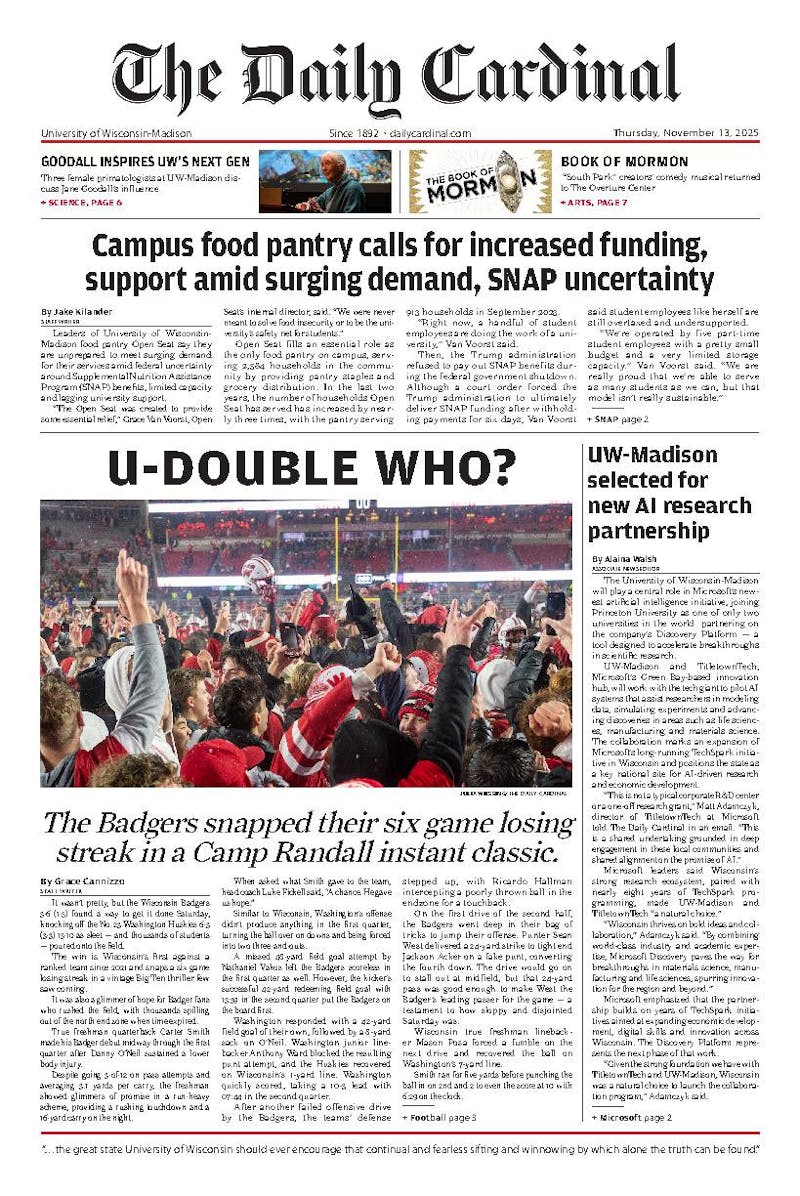This Tuesday at 7:30 p.m., University Opera will conclude its 2007-'08 season with the final performance of Donizetti's Don Pasquale"" in Music Hall. For many students, opera might not be a normal part of Tuesday night's festivities. However, with an open-minded approach, they may find a change of pace is exactly what their Tuesday night needs.
""Don Pasquale"" is the last of Donizetti's comic operas, all in the bel canto style - literally meaning ""beautiful singing"" - and serves as an excellent introduction to classical Italian opera.
The story centers on a wealthy, old man named Don Pasquale (played by Matthew Tintes) who, though he is supposed to look 70, looks more like a 45-year-old Grandpa Munster. Meanwhile, his nephew, Ernesto (played by James N. Kryshak), is enjoying the spread at his rich uncle's place and has fallen in love with a girl named Norina. Pasquale, who already had another girl lined up for Ernesto, is upset and tries to change Ernesto's mind, but it's no use. Don Pasquale puts Ernesto out on the street and enlists the help of a friend, Dr. Malatesta, to find a wife for himself, ensuring everyone that, though he is old, he is still full of passion and vigor.
However, the good doctor devises a plan in which Norina (the girl Ernesto loves) pretends to be the doctor's sister, Sofronia - fresh from the convent herself. When Pasquale and Sofronia are introduced, Sofronia acts meek and unassuming. When the don asks her if she goes to the theater, she says ""no,"" to which Pasquale, of course, replies ""that's commendable."" After all, the nineteenth-century Italian dinner did not cook itself.
After Pasquale marries her, it becomes clear she is not the woman he thought she was. She spends frivolously, belittles the servants and (gasp) leaves the house without Pasquale's permission, all in an effort to get Pasquale to demand a divorce. Of course, by the final scene, Norina's true identity is revealed and everyone is happy and/or befuddled.
While the play's moral may seem ridiculous, it sounds convincing when sung in three-part harmony by trained opera singers.
Morals aside, the story is completely founded in operatic convention, with each character an archetype that would have been familiar to contemporary Italian audiences. The director, William Farlow, has attempted to ""modernize"" the production by setting it in 1920s Italy and explaining the character's attitudes through the lens of the interwar years, but it seems like this was done only to make the costumes and scenery easier to produce. Either that or the setting was chosen as an excuse to have Ernesto dress like a sadistically colorblind golfer.
That said, tenor Kryshak makes up for his wardrobe eyesores with a soaring voice, and though the scenery and costuming are weak and inconsistent, Farlow and the UW Chamber Orchestra bring their A-game to this performance. It is a perfect retreat from papers, midterms or even the drudgery of late nights spent killing brain cells. This Tuesday, step outside your comfort zone. At $10, its cheaper than most dinner dates.





